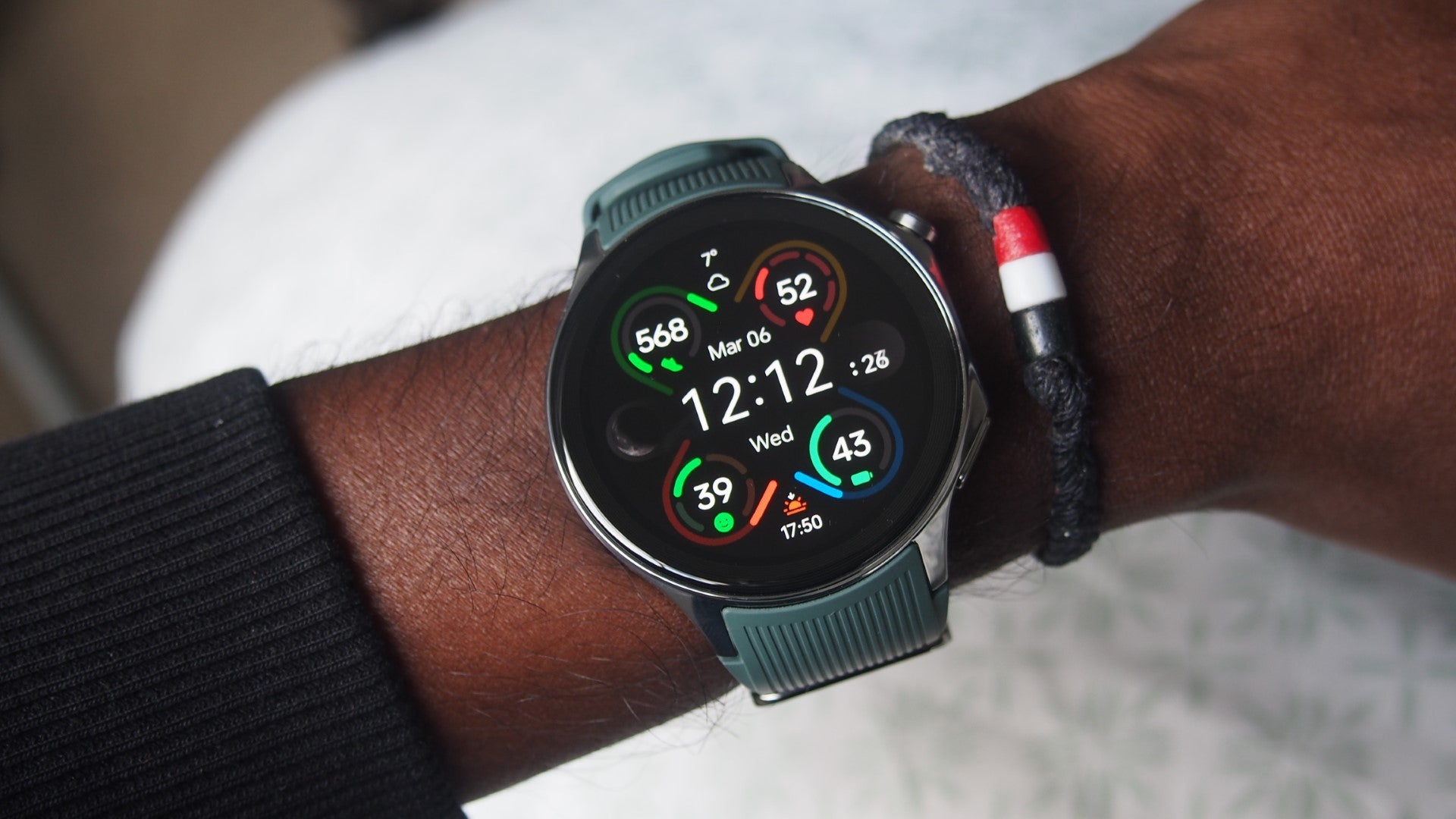Garmin Fenix 7X Review
The Fenix 7X gives you the best of Garmin
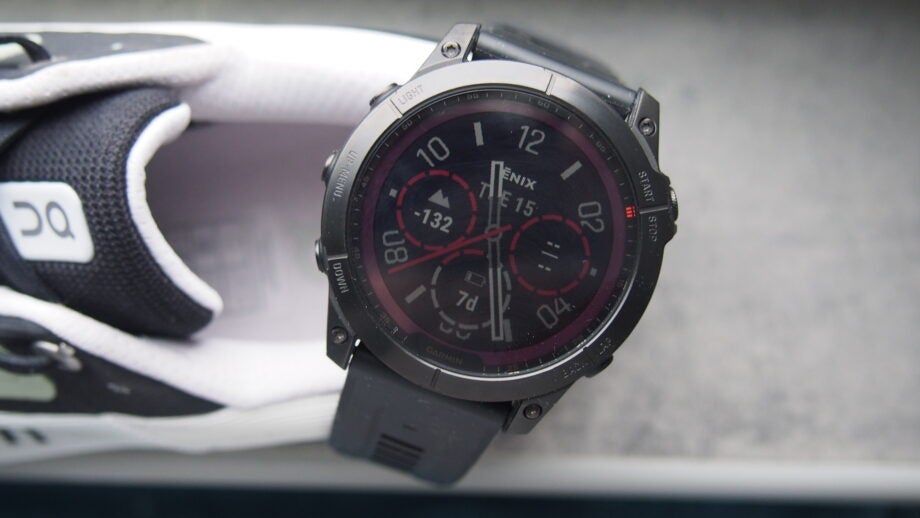

Verdict
The Garmin Fenix 7X gives you the best that Garmin has to offer in outdoor watch features. If you like your watches big with equally big battery life, and love the idea of an LED flashlight (which is a 7X exclusive), then the 7X is a rugged watch you’re going to want to drop on your wrist for your next adventure.
Pros
- Improved outdoor tracking accuracy
- Weeks of battery life
- Lots of outdoor features and modes
Cons
- The price
- Big design not for slimmer wrists
- Optical heart rate monitor accuracy
Availability
- UKRRP: £799.99
- USARRP: $899.99
Key Features
- Incredible battery lifeWith regular usage, we got 3.5 weeks of battery life from a single charge
- Highly accurate location trackingWith access to GPS, GLONASS, and Galileo, this watch has some of the most accurate mapping and navigation support you’ll find on any smartwatch
- Full of fitness featuresIf you’re looking for a meticulously thorough breakdown of your workouts, this watch offers pretty much any metric you care to name
Introduction
The Garmin Fenix 7X is the biggest option in Garmin’s new Fenix 7 series range. It’s also the one to get if you want all the features.
Along with offering the largest watch look, the 7X offers all the same features as the 7 and 7S, which include a new touchscreen, improved outdoor tracking accuracy and the kind of battery that can keep you tracking for weeks and much longer.
Like the other Fenix 7 series watches, the 7X doesn’t come cheap. If you’re going for the very top model, it will put a £1000/$1000 dent in your bank balance.
Design and Screen
- 51mm case size
- 1.4-inch transflective touchscreen
- 10 ATM water rating
- Solar and sapphire solar options
- Weighs 89g-96g (depending on model)
The Fenix 7X is a big watch, just like the Fenix 6X was, but it’s made some welcome tweaks on the design front.
You’re getting a 51mm case that comes with a polymer case matched up with a metal or lighter titanium if you’re willing to go for the priciest model. There are two versions of the 7X as well, with the 7X Solar and then the pricier 7X Sapphire Solar that I had to test.
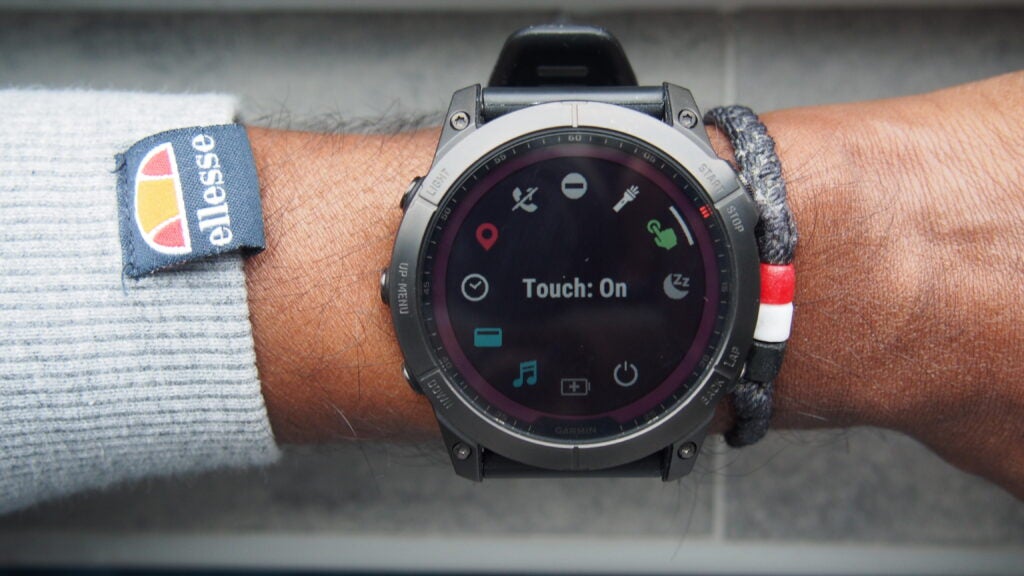
The big thing you’re getting on that Sapphire Solar version from a design point of view is a Power Sapphire lens, which means you’ve got the combination of solar charging support and more protective sapphire crystal packed onto the screen.
The screen size and resolution across the Fenix 7X range remains the same though. It’s a 1.4-inch, 280 x 280 resolution transflective display, matching what Garmin also included on the Fenix 6X. It’s a big screen and that transflective display technology makes it ideal for viewing in bright outdoor light. It lacks the vibrancy and colour you’ll get on an AMOLED as Garmin has included on its Epix and Venu 2 Plus watches, but it also means the 7X can reserve its power for other things it’s capable of.
Garmin has enabled touch on that screen as well now, which does make navigation around the menus and screens a little easier. The touchscreen support works well on the whole, with no horrible signs of lag.
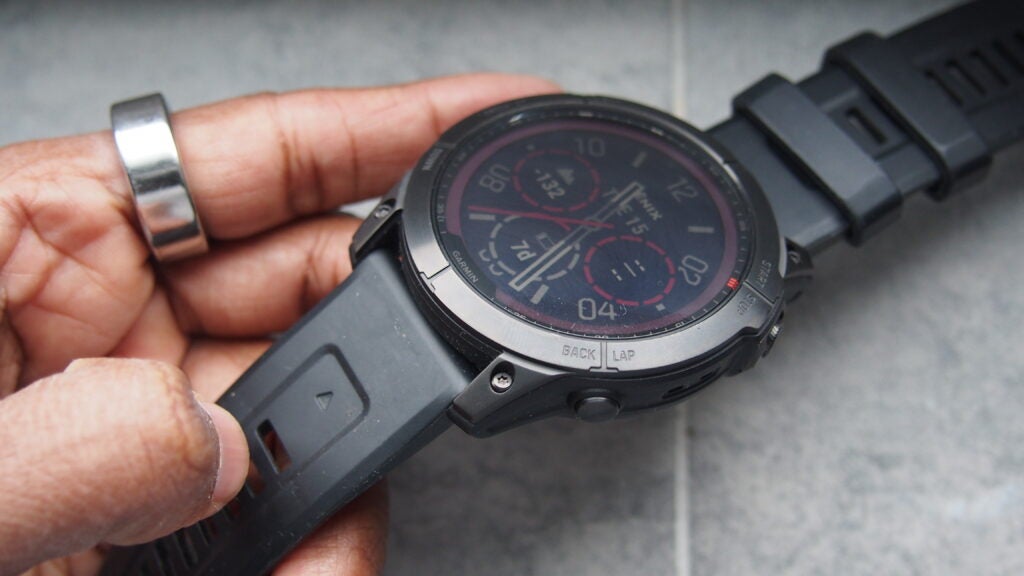
Straps-wise, there’s a pretty standard silicone strap that measures in at 26mm and uses Garmin’s QuickFit mechanism to make it easier to swap in new straps. If you want to throw on a leather or a titanium strap instead, you’re going to have to pay for it. One of the titanium straps costs well over £200/$200.
Waterproofing is rarely something you need to worry massively about on a Garmin wearable these days. Pretty much every watch it launches is fit for swimming and showering and that doesn’t change with the 7X. You’re getting a 10 ATM water rating, which means it’s safe to be submerged in water up to 100 metres depth.
One exclusive feature you get on the 7X that you won’t find on the other new Fenix models is an LED flashlight. It can switch between red and white LED lights with the latter offered in a range of brightness settings.
This isn’t just illuminating the screen in colour, but appears on the outside of the bezel. You can also customise how that light beams during tracking too. It’s a useful little feature that can offer a welcome boost of light for your nighttime outdoor outings.
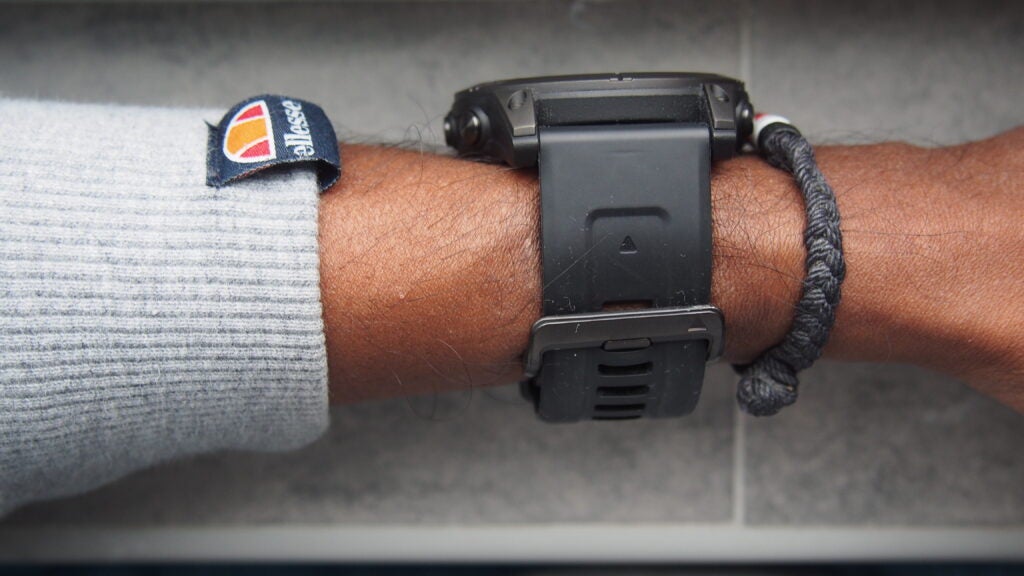
There’s no getting away from the fact that the 7X is a giant of a watch to wear, especially on my slender wrist. But Garmin has managed to make that weight on the X more manageable over the years and if you spend more on the titanium bezel and case, then things will get noticeable lighter on the design front.
You’re looking at going from 96g on the solar version to 89g on the sapphire solar model, but those kinds of differences are going to be more noticeable if you’re planning to keep this on for long spells on hikes or climbs.
If you can get on board with its big frame, there’s actually a nice looking outdoor watch that’s made from high quality materials and does feel like it’s fit to handle some serious outdoor carnage.
Tracking and Features
- Multi-continent maps
- Turn-by-turn navigation
- Real-time Stamina
- Visual race predictor
- Multi-GNSS support
- Touchscreen
Beneath that large exterior lies a collection of features that makes the Fenix 7X a bit of an outdoor watch powerhouse. Whether it’s mapping, tracking runs or telling you about ski runs, this watch has pretty much got you covered.
All of the key outdoor sensors are in place, so there’s the trio of ABC ones (altimeter, barometer and compass) and you’ve got access to GPS, GLONASS and Galileo satellite systems.
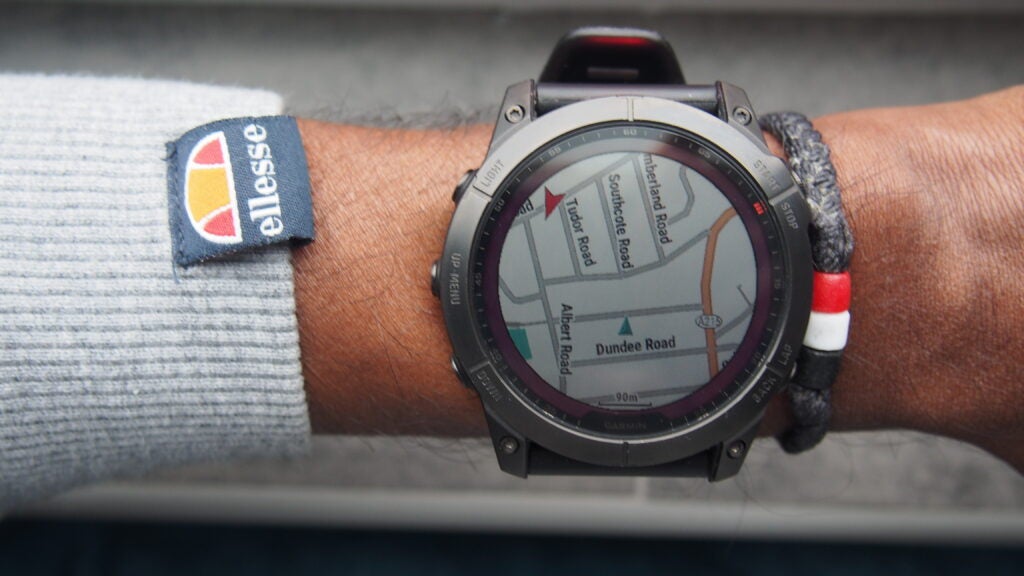
On top of access to those satellites, Garmin is also introducing new multi frequency positioning, which uses multiple frequencies from available satellite systems to improve outdoor accuracy. It works well too. I used it against a Fenix 6 Pro and it’s actually surprising just how much more accurate it was pinpointing exact positioning in real-time and plotting routes on maps post-activity in the Garmin Connect app.
There’s a Pulse Ox sensor to measure blood oxygen during the night for an additional hit of sleep data, though sleeping with this watch is a challenge. It’s going to prove more useful for assessing your acclimation to altitude, though using this sensor continuously will have a noticeable impact on battery life.
Mapping and navigation features are likely going to be big reasons why you’re looking at the Fenix 7X and it’s safe to say it offers some of the best mapping and navigation support you’ll find on an outdoor watch right now. It might not feel like a huge leap on what was available on the 6X, but you’re still getting a really strong experience here.
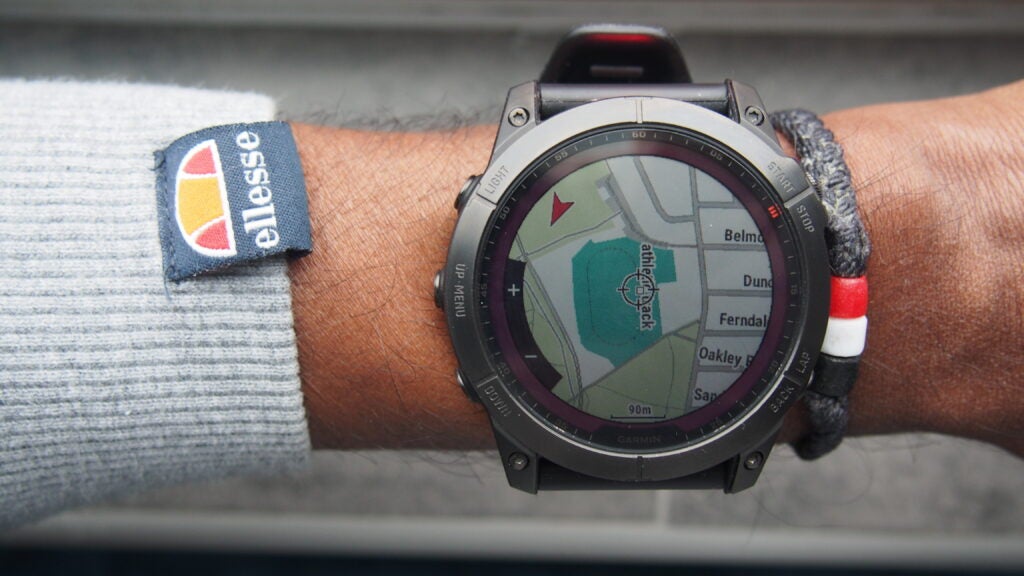
There are preloaded multi-continent topographic maps, which are easy to follow and offer up rich detail and the ability to use the onboard Wi-Fi to keep them updated too. You’re still getting access to thousands of golf courses here too and there are new SkiView maps, which can tell you about the difficulty of runs before you think about tackling them.
On top of the mapping, you have turn-by-turn navigation and the ability to see breadcrumb trails in real-time. There’s also the useful trackback and back to start modes and a new Up Ahead feature that can give you a head’s up on upcoming water and food stations during races.
On the performance tracking front, everything you can pretty much do on a Forerunner is available here on the 7X, plus a few extras might not necessarily be make or break features for everyone.
It ticks off core sports modes like running, cycling, swimming (pool and open water), running and there’s a dedicated golf mode to match what you get from Garmin’s Approach watches.
When you delve into the more niche outdoor tracking pursuits, there’s snowboarding, skiing, kayaking and paddleboarding. If you want to stay indoors and train, there is new HIIT workout modes and you still get the same strength training and auto rep counting modes that have been present on Garmin watches for a while. These do a so-so job of tracking.
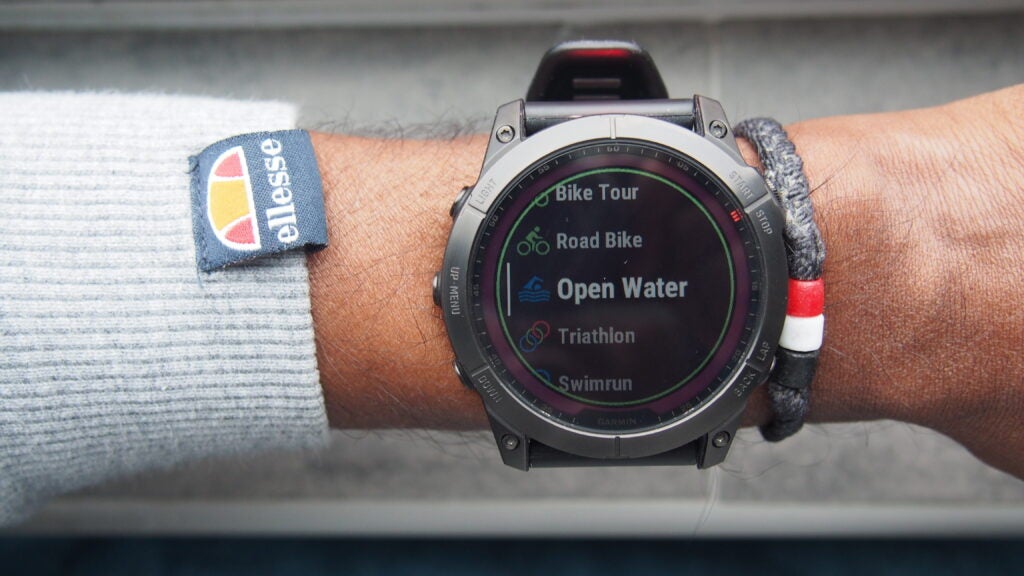
Where it excels is for things like running, swimming and those more niche activities where you get plenty in the way of metrics and the ability to customise data fields and see activity-specific data on a nice big screen. Crucially, the data during workouts and for fueling training analysis and insights, which remain the same as the ones available on the 6X, feel reliable.
If you care about heart rate monitoring, included here is Garmin’s latest Gen 4 Elevate sensor, though, based on my experience, you’re best to pair up an external heart rate monitor to get the most reliable data. There’s not a huge difference in performance from the optical heart rate sensor that was packed onto its predecessor.
Like the other new Fenix 7 series watches, Garmin has added some new running-focused software features that I imagine might potentially make its way to some other Garmin watches in the future.
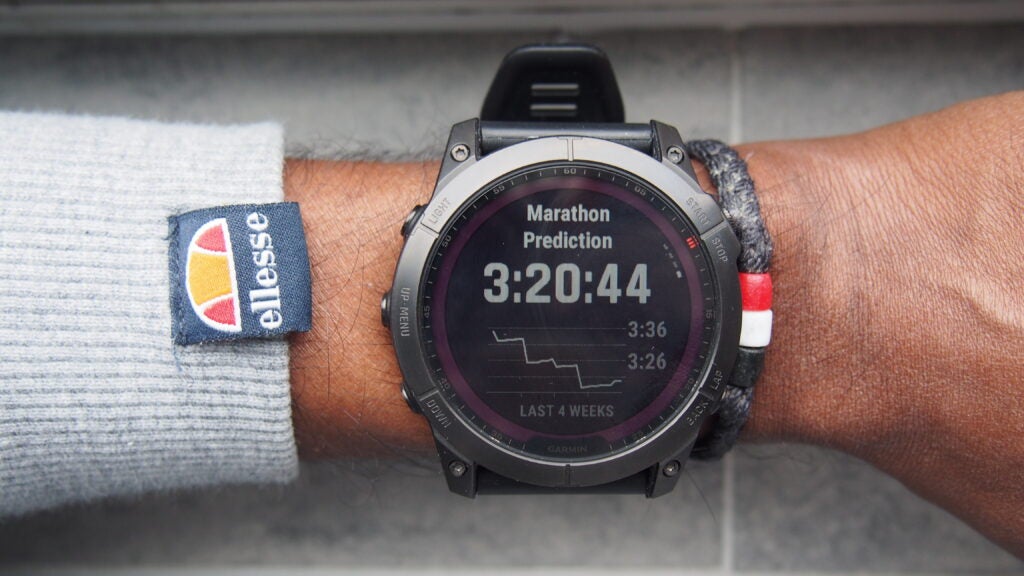
The first is an improved visual race predictor, which adds graphs along with your predicted times for 5k, 10k, half marathon and full marathon distances, which are based on historical data and VO2 Max data. Those added graphs mean you get a better sense of why your times might be dropping off or picking up based on your training and makes it on the whole a more useful feature to make use of.
The other is Stamina, which aims to give you a better sense of the capacity you have to tackle a certain distance for running or cycling. It looks at VO2 Max, historical workout data and training load insights to better understand and help make sure you don’t empty your tank at the beginning of a run or ride.
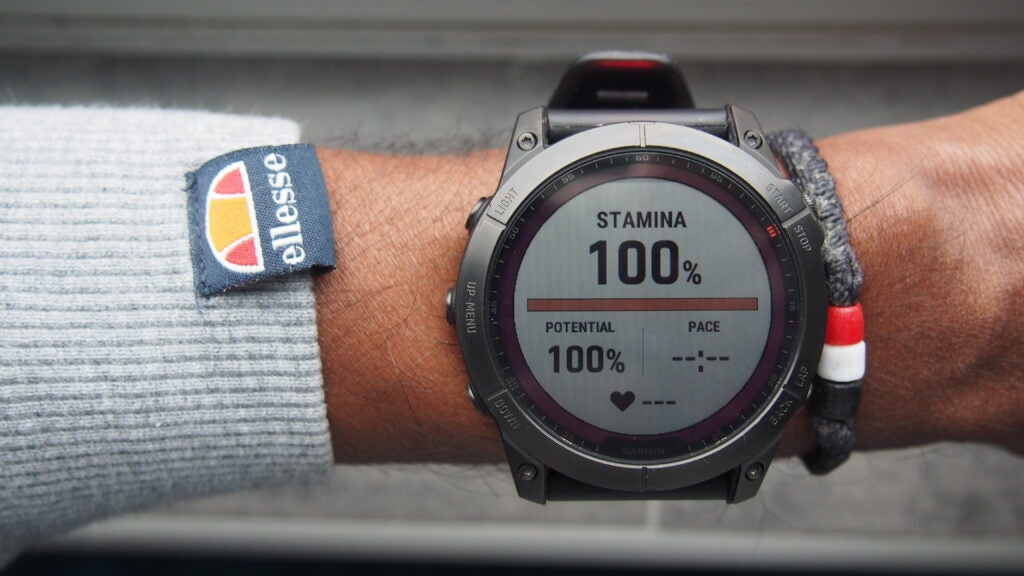
It’s a feature that definitely feels aimed at more experienced runners and riders, that have a good sense of training load and understanding VO2 Max and how that can be applied during an activity to understand why your stamina levels might be dropping off quickly or stabilising. It’s not the most straightforward feature to get to grips with, but there’s the crux of a potentially useful training feature here.
Ultimately, whether you look to the 7X for those hardcore training and tracking features or you seek out guidance from features like daily suggested workouts or the recovery advisor, this watch will give it to you. You just might need to spend some getting to know what it’s capable of first before deciding which features are actually going to be the most useful.
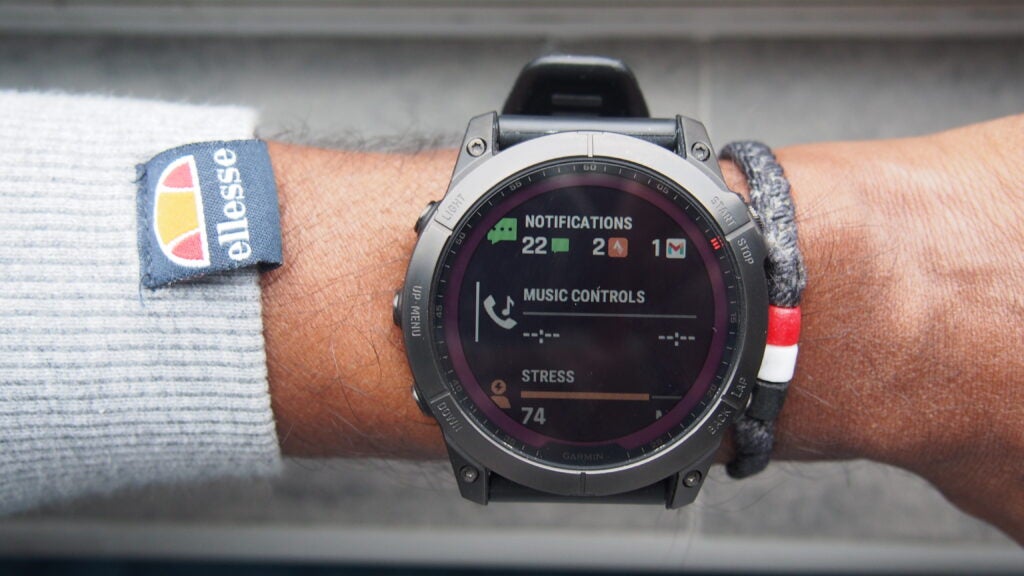
Away from sports tracking, the Fenix 7X can play smartwatch. You can view notifications from iPhone and Android phones, though the latter will let you respond to messages and emails with custom or preset responses. Some of the 32GB storage is freed up for the music player, which lets you drag and drop music onto the watch or sync it over from services like Spotify and Amazon Music over Wi-Fi. There’s also Garmin Pay and you have full access to Garmin’s slightly clunky Connect IQ Store.
The Fenix 7X certainly isn’t an Apple Watch 7 and if you want those richer messaging features or LTE, you’ll need to look elsewhere for them. What does make the cut here though does work and that touchscreen makes the experience more smartwatch-like too. So it does mean the 7X can be useful outside of that tracking time too.
Battery Life
- 28 days in smartwatch mode, 37 days with solar
- 89 hours in full GPS mode
- Up to a year in battery saver mode
Garmin’s Fenix watches are renowned for promising big battery numbers and in the 7X, you’re getting the biggest numbers. This is a watch that can go for almost a month and has the capability of going much longer.
In smartwatch mode alone, you can expect 28 days, which goes to 37 days only if you’re wearing it all day with a good few hours of that day spent outside.
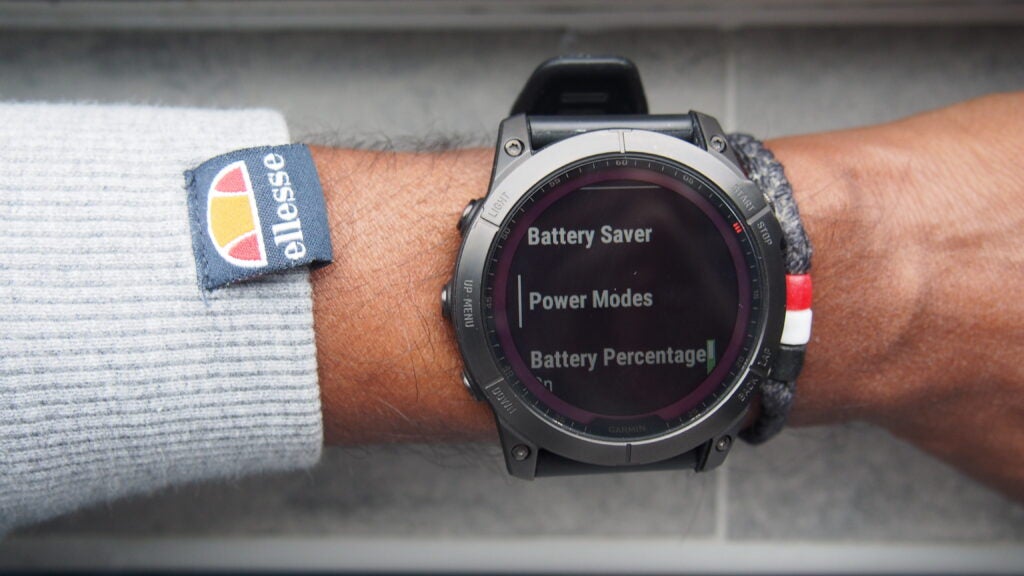
When you get tracking, you can expect anywhere from 89 hours in GPS mode or 122 hours with solar factored in. When you use the multi-frequency tracking mode battery life drops to 36-41 hours, which gives you a sense of what happens when you use the watch with the most accurate tracking support available.
Music streaming and continuous blood oxygen monitoring has a notable drain on battery life like other Garmin watches too.
I found that with a mix of features, regular tracking in use including regular use of the top accuracy tracking mode the 7X was able to for 3.5 weeks. It could definitely make it to a month, which would put it up there with Garmin’s Enduro watch for battery performance.
Bottom line, if you want the new Fenix with the best battery life, this is the one.
Latest deals
Should you buy it?
You want a feature-packed outdoor watch. Whether it’s mapping, tracking accuracy, or a flashlight, the Fenix 7X packs it all and a whole lot more.
You’ve got skinny wrists. The Fenix 7X is a whole lot of watch, and you can grab pretty much all the same great features on a 7 or 7S that looks less hulking to wear.
Final Thoughts
The Garmin Fenix 7X is going to be too much Fenix for most, but if you want the best battery life on Garmin’s new Fenix 7 range then it’s the one to go for. Also, if you like the idea of being able to use your watch as a useful second light, then you might just find the budget and the wrist space for the 7X.
How we test
We thoroughly test every fitness tracker we review. We use industry standard testing to compare features properly and we use the watch as our main device over the review period. We’ll always tell you what we find and we never, ever, accept money to review a product.
Worn as our main tracker during the testing period
Heart rate data compared against dedicated heart rate devices
Side-by-side GPS comparison with competing devices
FAQs
It’s compatible with iPhone or Android smartphones
The Germin Fenix 7X has access to GPS, GLONASS, and Galileo
We found that regular usage provided approximately three and a half weeks of battery life on a single charge
Full specs
Jargon buster
ATM
The unit of measurement for atmospheric pressure, used in the context of understanding how far a device can be submerged into a body of water. For reference, 1ATM is equal to roughly 10 metres.GPS
An abbreviation of the Global Positioning System, which uses satellite communication to pinpoint your location. Some smartwatches are able to achieve this communication without the use of a smartphone.GLONASS
An alternative to GPS that was originally developed in Russia. In the absence of GPS, some smartwatches can utilise the GLONASS framework to determine a user’s location.
NFC
An abbreviation for ‘near field communication’. This technology allows devices to share information by coming into close proximity with one another – the most popular use of this system is in contactless payments.




